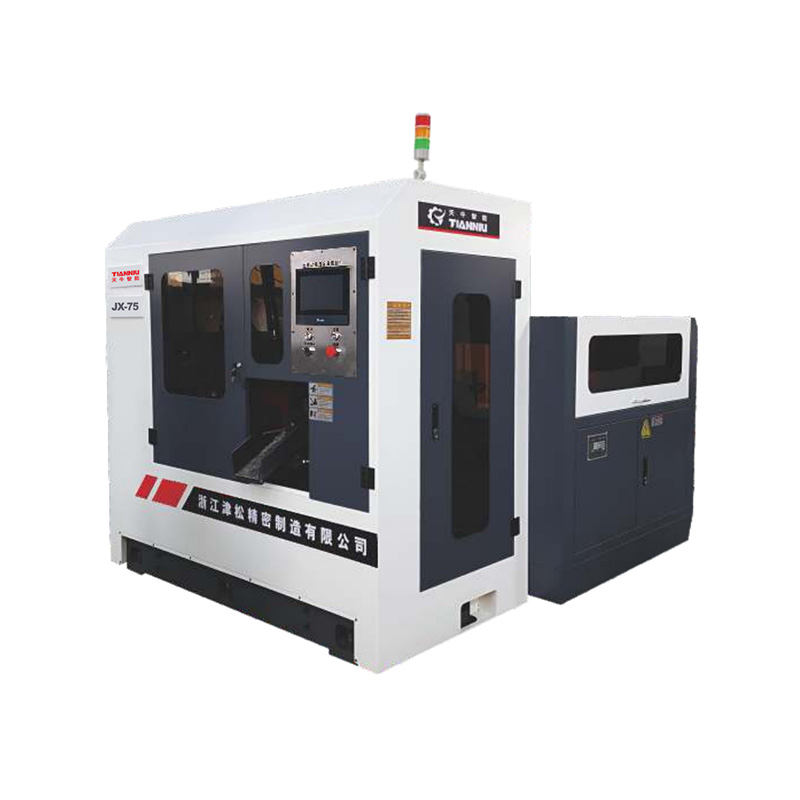Email: hujin@chinahujin.cn
Performance Differences of Horizontal Band Saw Machine When Cutting Materials of Varying Thickness
Adaptability to Diverse Thickness Requirements
A horizontal band saw machine is well-known for its ability to handle a wide range of material thicknesses, making it a staple in many metalworking and fabrication shops. Whether dealing with thin-walled tubes or large solid blocks of metal, this type of machine provides consistent and controlled cutting results. For thinner materials, the machine’s adjustable feed rate and blade speed allow for delicate handling to prevent deformation or burrs. Conversely, for thicker workpieces, the robust frame and powerful motor ensure the blade maintains stability and cutting force throughout the entire process. The ability to easily switch between different thicknesses without major reconfiguration is a core strength of this equipment.

Blade Selection and Feed Rate Considerations
The performance of the machine across different thickness levels is closely tied to the choice of blade and the feed rate settings. Thinner materials typically require a blade with finer teeth to reduce the risk of snagging or warping during the cut. In contrast, thicker or denser materials demand coarser tooth blades that can efficiently remove material without overheating. Additionally, feed rates must be carefully adjusted based on thickness to balance speed and accuracy. A slower feed rate is usually ideal for cutting through thick sections to avoid excessive pressure on the blade, which can cause deflection or premature wear.
Cooling and Lubrication Efficiency
Cutting materials of varying thicknesses places different demands on the cooling and lubrication systems. Thicker materials generate more friction and heat, increasing the need for effective coolant delivery to the cutting zone. If cooling is inadequate, the blade can overheat, causing loss of hardness or blade fatigue. Thinner materials, while not generating as much heat, still benefit from lubrication to maintain a clean cut surface and prolong blade life. Horizontal band saw machines equipped with automatic coolant circulation systems tend to perform better across a spectrum of material sizes, as they help maintain a consistent cutting environment regardless of the load.
Precision and Cut Quality Outcomes
Cut quality is a significant performance indicator when slicing through materials of different thicknesses. On thin stock, maintaining a precise, straight edge is critical, and the machine must hold the material securely to avoid vibration or movement during the process. For thick materials, cut accuracy is influenced by how well the blade can stay aligned under high pressure. High-quality horizontal machines include blade guide systems and hydraulic tensioning that help prevent lateral movement and keep the blade cutting straight even under strain. As a result, they are capable of delivering tight tolerances regardless of the workpiece dimensions.
Impact on Machine Longevity and Maintenance
Frequently switching between thin and thick materials can have cumulative effects on the machine’s wear rate, especially on components like the blade guides, bearings, and hydraulic systems. Heavier loads from thick materials can place greater stress on the drive mechanism, while finer materials may require more delicate blade handling, increasing the need for calibration. However, machines that are built with durability and ease of adjustment in mind tend to manage these transitions well. Regular maintenance, including blade changes and system checks, ensures that performance remains suitable even with diverse material demands.
Conclusion
Overall, the performance of a horizontal band saw machine when cutting materials of varying thicknesses reflects its flexibility, engineering quality, and operational precision. From thin sheets to heavy bars, it offers a dependable cutting solution when properly configured with the right blades, feed rates, and cooling systems. Its ability to adapt quickly to different requirements without compromising accuracy makes it a valuable asset in any fabrication setting where material thickness is not uniform. With the right usage and maintenance practices, this machine remains efficient and effective across a wide range of cutting tasks.
 English
English русский
русский عربى
عربى






